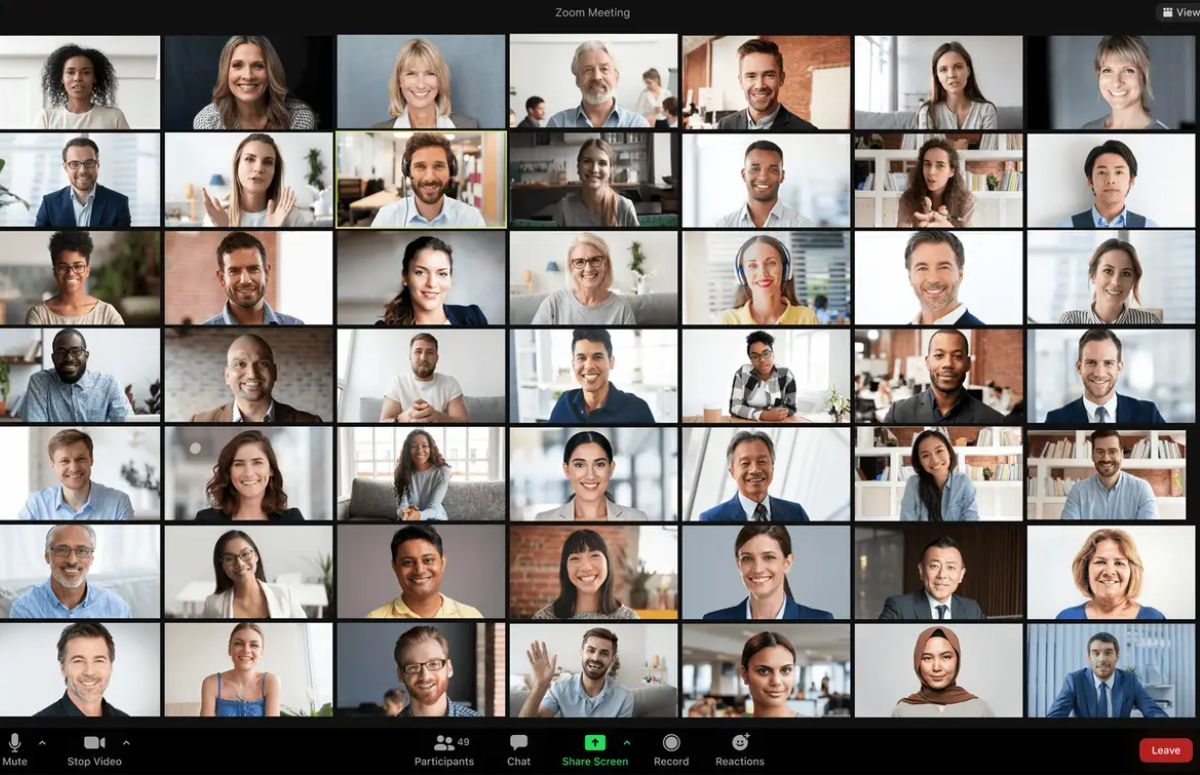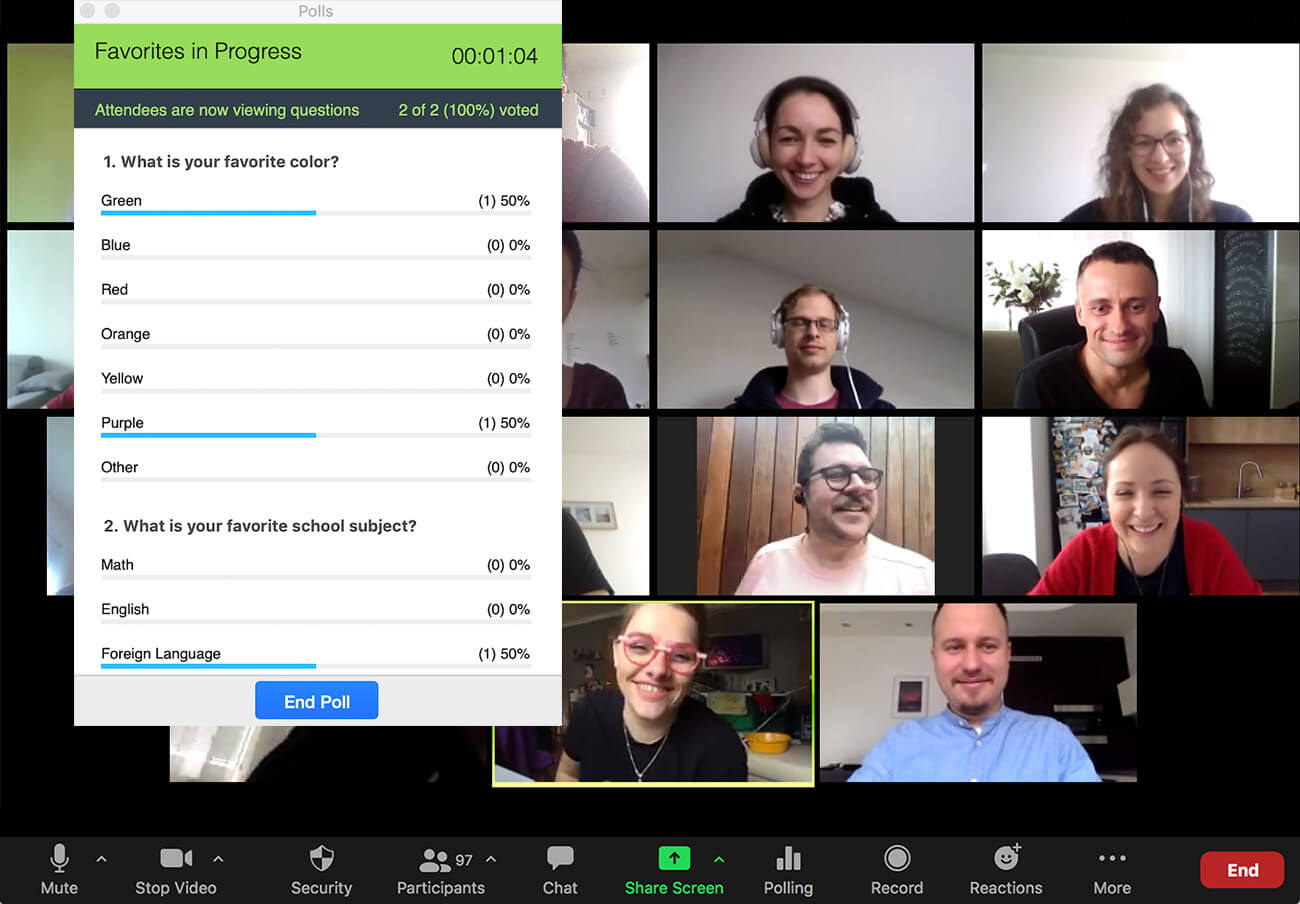Introduction
Downloading the Zoom registration list is an essential task for event organizers and meeting hosts. Whether you’re running a conference, webinar, or training session, having access to the registration details can help you stay organized and prepare for the event more effectively. By downloading the registration list, you can easily keep track of attendees, collect important data, and follow up with participants after the meeting.
In this guide, we will walk you through the step-by-step process of downloading the Zoom registration list. Whether you’re a beginner or an experienced Zoom user, these simple instructions will make the process easy to understand and follow.
Before we dive into the steps, it’s important to note that you need to have a Zoom account to access the registration list. If you don’t have one, you can sign up for a free account on the Zoom website. Once you’re ready, let’s get started!
Keep in mind that the steps may slightly vary depending on the version of Zoom you’re using and whether you’re hosting a meeting or a webinar. However, the general process remains the same, and we will provide guidance that applies to both scenarios.
Now, let’s continue to the next section, where we will show you how to sign in to your Zoom account and access the necessary features to download the registration list.
Why is it important to download the Zoom registration list?
Downloading the Zoom registration list offers several benefits for event organizers and meeting hosts. Let’s explore why it is crucial to have access to this valuable information:
1. Attendee Tracking and Organization: When you download the registration list, you gain a comprehensive overview of all the participants who have registered for your meeting or webinar. This allows you to keep track of attendee numbers, monitor who has confirmed their attendance, and identify any no-shows. Having this information at your fingertips helps you organize the event more effectively and ensures that you are adequately prepared for the expected number of participants.
2. Contact Information: The registration list provides you with the contact details of the participants, including their names, email addresses, and possibly other relevant information they provided during the registration process. This enables you to reach out to attendees before and after the event, send reminders, updates, and follow-up emails. Having access to this valuable data can greatly enhance your communication with participants and help foster engagement and interaction.
3. Data Analysis and Insights: Zoom registration lists can be a treasure trove of data that can provide valuable insights into your audience and event performance. By analyzing the registration information, you can gain a better understanding of your attendees’ demographics, interests, and preferences. This information can help you tailor your content, marketing strategies, and future events to better cater to your target audience.
4. Compliance and Record-Keeping: Downloading the registration list ensures that you have a record of all the individuals who attended your event. This can be important for compliance purposes, such as tracking attendance for regulatory or legal requirements. It also helps you maintain a comprehensive database of event participants, which can be beneficial for future reference or reference for similar events.
5. Evaluation and Feedback: The contact information obtained from the registration list allows you to gather feedback from participants after the event. You can send surveys or feedback forms to gain insights into their experience, satisfaction levels, and suggestions for improvement. This feedback is invaluable for refining your events and making them more engaging and relevant to your audience in the future.
With these compelling reasons, it becomes clear why downloading the Zoom registration list is a crucial step for event organizers and meeting hosts. It provides you with the necessary tools to ensure a seamless event experience, effective communication, data-driven decision-making, and continuous improvement of future events.
Step 1: Sign in to your Zoom account
The first step in downloading the Zoom registration list is to sign in to your Zoom account. Follow the instructions below to access your account:
- Open your web browser and go to the Zoom website.
- Click on the “Sign In” button at the top right corner of the page.
- Enter your Zoom username and password and click “Sign In”.
If you don’t have a Zoom account, you can sign up for a free account by clicking on the “Sign Up, It’s Free” button on the login page and following the registration process.
Once you have successfully signed in to your Zoom account, you will have access to the necessary features to download the registration list for your meetings or webinars.
Now that you’re signed in, let’s move on to the next section where we will guide you through the process of accessing the “Reports” section in your Zoom account.
Step 2: Go to the “Reports” section
After signing in to your Zoom account, you need to navigate to the “Reports” section to access the registration list. Follow the steps below to locate this section in your Zoom account:
- Once you are logged in to your Zoom account, you will be on the Zoom dashboard.
- At the top navigation bar, you will find several options. Click on the “Reports” tab.
- A drop-down menu will appear with different types of reports.
- Select the type of report that corresponds to the meeting or webinar for which you want to download the registration list. For example, if you hosted a meeting, select the “Meeting” report. If you hosted a webinar, select the “Webinar” report.
The “Reports” section provides you with various types of reports to gather data and insights about your Zoom sessions. By selecting the appropriate report type, you can then move on to the next step to filter and download the registration list specific to your meeting or webinar.
Now that you’re in the “Reports” section of your Zoom account, let’s continue to the next step, where you will learn how to narrow down the report to the specific meeting or webinar you are interested in.
Step 3: Select “Usage” tab
Once you are in the “Reports” section of your Zoom account, you will need to locate and select the “Usage” tab. The “Usage” tab contains the necessary options to filter and generate the registration list for your specific meeting or webinar. Follow the steps below:
- In the “Reports” section, look for the top navigation bar.
- Among the available tabs, locate and click on the “Usage” tab.
By selecting the “Usage” tab, you will have access to the specific tools and options designed for generating reports and gathering data related to the usage of your Zoom meetings or webinars. This tab will allow you to narrow down the search parameters and focus on the specific event for which you want to download the registration list.
Now that you have successfully selected the “Usage” tab, let’s move on to the next step, where we will guide you through the process of choosing the type of report based on your meeting or webinar.
Step 4: Choose “Meeting” or “Webinar” report
After selecting the “Usage” tab in the “Reports” section of your Zoom account, the next step is to choose the appropriate report type based on whether you hosted a meeting or a webinar. Follow the steps below to make the right selection:
- In the “Usage” tab, you will find a list of available report options.
- Locate the section that corresponds to your event type – either “Meeting” or “Webinar”.
- Click on the corresponding option based on the type of event you hosted.
By choosing either the “Meeting” or “Webinar” report, you are specifying the type of event for which you want to generate the registration list. This ensures that the report includes the relevant data specific to your meeting or webinar.
Once you have made your selection, you’re one step closer to downloading the registration list for your event. In the next step, we will guide you on how to filter the report to narrow down the results to your specific meeting or webinar.
Step 5: Filter the specific meeting or webinar
After choosing the appropriate “Meeting” or “Webinar” report in the “Usage” tab, the next step is to filter the report to narrow down the results to your specific meeting or webinar. Follow the steps below to apply the necessary filters:
- In the selected report, you will find various filter options.
- Look for the filter that allows you to specify the date range or time frame of your event.
- Enter the start and end dates or select them from the calendar provided.
- If applicable, you can also filter by other parameters such as host name, meeting ID, or webinar topic.
- Once you have entered the desired filters, click on the “Apply” or “Filter” button.
By applying the filters, you will refine the report to include only the data related to your specific meeting or webinar. This allows you to focus on the registration list for the event you’re interested in.
It’s worth noting that the filter options may vary depending on the Zoom version you’re using and the available features. If you’re unsure about which filters to apply or encounter any difficulties, consult Zoom’s official documentation or support resources for further assistance.
With the report properly filtered, you’re ready to proceed to the next step, where you will learn how to download the registration list for your specific meeting or webinar.
Step 6: Click on “Download” button
Once you have filtered the report to include data specific to your meeting or webinar, the next step is to click on the “Download” button to obtain the registration list. Follow the instructions below to complete this step:
- Locate the “Download” button within the report interface.
- Click on the “Download” button to initiate the download process.
Depending on the Zoom version and the specific report type you have selected, the “Download” button may be located in different positions within the interface. It is commonly found either at the top or bottom of the report page.
Once you click on the “Download” button, the registration list will be downloaded to your device. In most cases, the file will be downloaded in a comma-separated values (CSV) format, which can be easily opened and viewed in spreadsheet software like Microsoft Excel or Google Sheets.
It’s important to note that the time it takes to generate and download the registration list may vary depending on the size of the report and the number of participants in your meeting or webinar. Please be patient during the download process, especially for larger events.
With the registration list successfully downloaded, you can move on to the final step, where you will learn how to save the file for future reference and analysis.
Step 7: Save the downloaded file
After downloading the registration list in CSV format, the final step is to save the file to a location of your choice for future reference and analysis. Follow these guidelines to complete this step:
- Open the folder or location on your computer where downloaded files are typically saved.
- Locate the downloaded CSV file in the list of files.
- Right-click on the file and select “Save As” or “Save” from the options.
- Choose a destination folder or location on your computer where you want to save the file.
- Give the file a descriptive and recognizable name. It’s a good practice to include information such as the event name, date, or any other relevant details.
- Click the “Save” button to save the file in the chosen location.
By saving the downloaded file, you ensure easy access to the registration list whenever you need it. Storing it in a specific folder or location also helps in organizing your files and makes it easier to locate them in the future.
Additionally, consider making backup copies of the file to prevent accidental loss or damage. You can create duplicate copies in other secure locations, external storage devices, or cloud storage platforms for added data protection and accessibility.
Now that you have successfully saved the downloaded registration file, you have completed the final step of the process. You can now access and utilize the registration list for various purposes, such as attendee tracking, communication, data analysis, and follow-up activities.
Conclusion
Downloading the Zoom registration list is a crucial task for event organizers and meeting hosts who want to stay organized and effectively manage their participants. By following the step-by-step process outlined in this guide, you can easily obtain the registration list and access valuable information about your attendees.
Throughout the process, we covered various steps, including signing in to your Zoom account, navigating to the Reports section, selecting the appropriate report type (Meeting or Webinar), filtering the specific meeting or webinar, clicking on the “Download” button, and finally, saving the downloaded file for future reference and analysis.
By downloading the Zoom registration list, you gain several benefits. It enables you to track attendees, collect contact information, analyze data, ensure compliance, and gather feedback. These benefits allow you to better organize your events, communicate with participants, make data-driven decisions, and improve the overall experience for your audience.
Remember to adapt the steps based on your specific Zoom version and any updates to the platform’s interface. Explore the official Zoom documentation or seek additional assistance if needed.
With the registration list downloaded and safely saved, you’re now equipped with the necessary tools to enhance the success and effectiveness of your Zoom meetings and webinars. Make the most of this valuable resource to engage with your attendees and create memorable online experiences.
Thank you for following this guide, and we wish you productive and successful Zoom events!

























